Abstract
1 In intact dogs anaesthetized with pentobarbitone, clonidine (10 μg/kg, i.v.) produced a sustained decrease in heart rate. This effect was significantly smaller in vagotomized dogs in which the sympathetic drive to the heart was either left intact or experimentally created by continuous electrical stimulation of the decentralized cardioaccelerator nerve. In the latter preparation, the negative chronotropic action of clonidine was reversed by an intravenous injection of phentolamine, whereas in the former experimental situation it was antagonized only by an intravenous plus an intravertebral artery injection of phentolamine.
2 In dogs with denervated hearts the tachycardia produced by electrical stimulation of the cardioaccelerator nerve was accompanied by a rise in noradrenaline overflowing into the coronary sinus plasma. Clonidine inhibited both these effects and phentolamine restored them to pre-clonidine levels.
3 Clonidine decreased heart rate in dogs with an intact parasympathetically innervated heart and decentralized stellate ganglia. When the low basal heart rate of this preparation was elevated by electrical stimulation of the cardioaccelerator nerve, clonidine had a negative chronotropic effect, the degree of which was similar to that observed in intact dogs.
4 Clonidine neither modified baseline heart rates of dogs with denervated hearts nor the levels of heart rate which in this preparation were reduced by a sustained electrical stimulation of the right vagus or increased by intravenous infusions of either isoprenaline or noradrenaline.
5 These findings indicate that in the intact dog, bradycardia induced by clonidine resulted both from a reduction of sympathetic drive and from a concomitant increase in parasympathetic tone. The latter action did not occur at the level of cardiac neuroeffector structures since it was observed only in the presence of centrally connected vagal pathways. The inhibition of cardiac sympathetic tone was of both peripheral and central origin. Clonidine, in fact, diminished the quantity of noradrenaline overflowing into the coronary sinus plasma in cardiac denervated dogs with a tachycardia elicited by electrical stimulation of the decentralized cardioaccelerator nerve. This peripheral effect was probably due to an activation of α-adrenoceptors located on sympathetic nerve terminals since it was antagonized by phentolamine. However, in vagotomized dogs (intact sympathetic pathways) intravenous phentolamine failed to antagonize the heart rate effects of clonidine which were abolished by a subsequent injection of phentolamine into the vertebral artery. Thus, the clonidine-induced inhibition of both the peripheral and central sympathetic drive to the heart would appear to be mediated via α-adrenoceptors.
Full text
PDF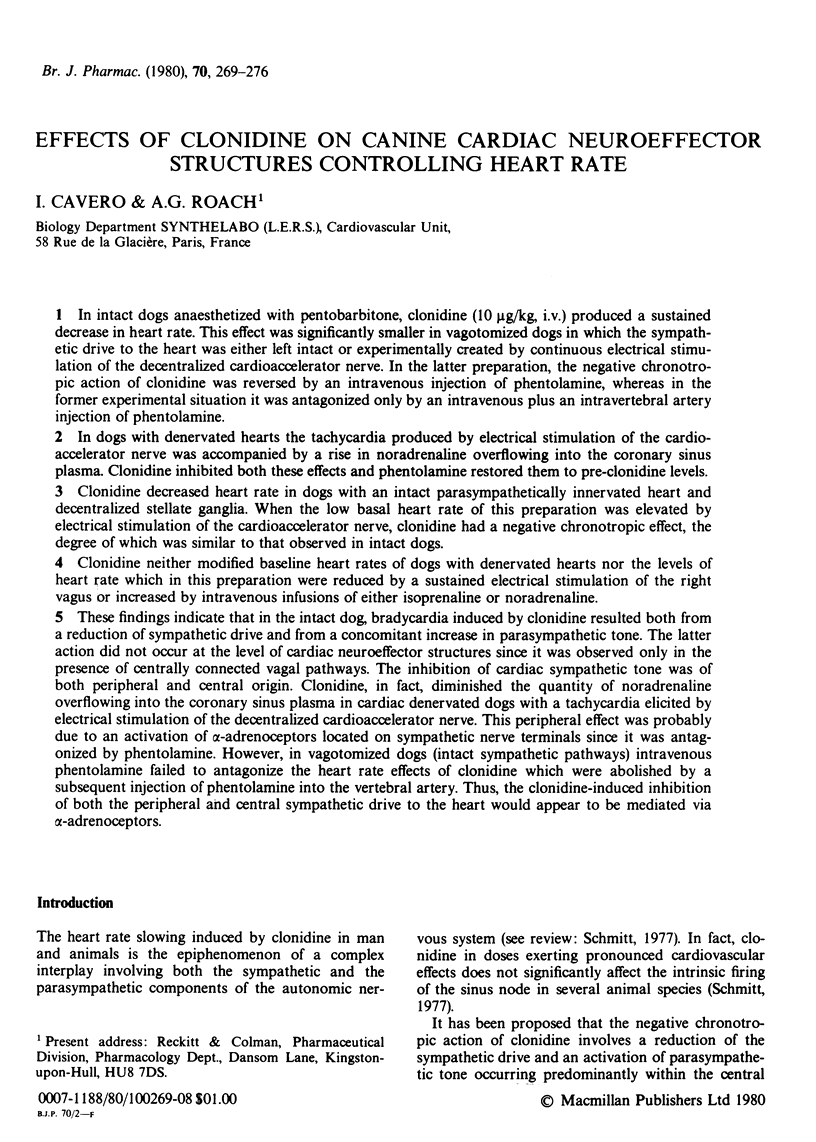
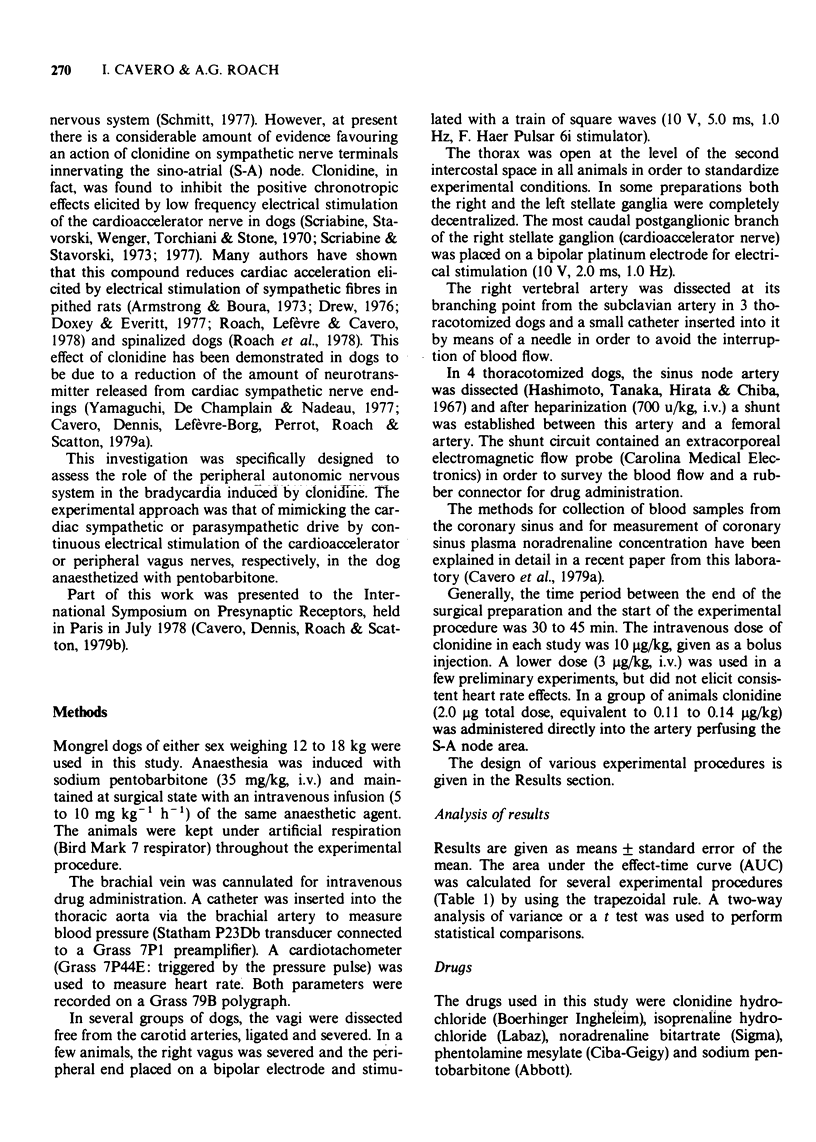
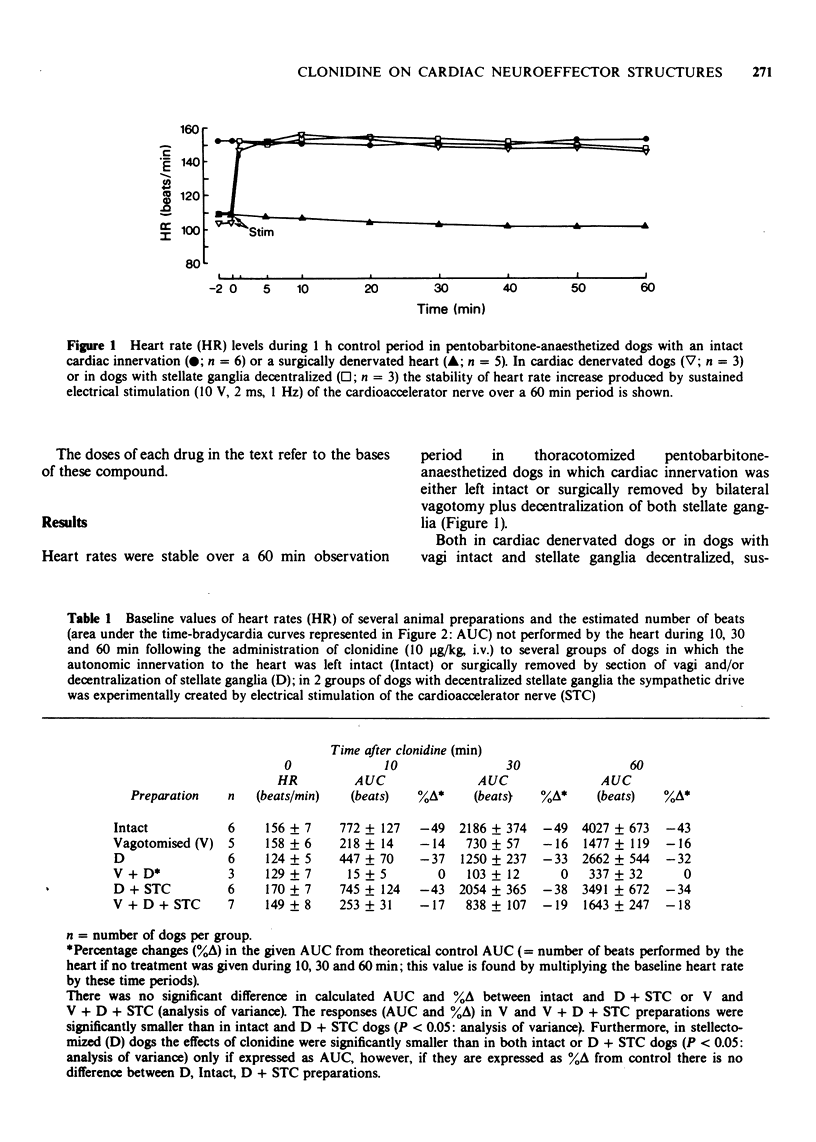
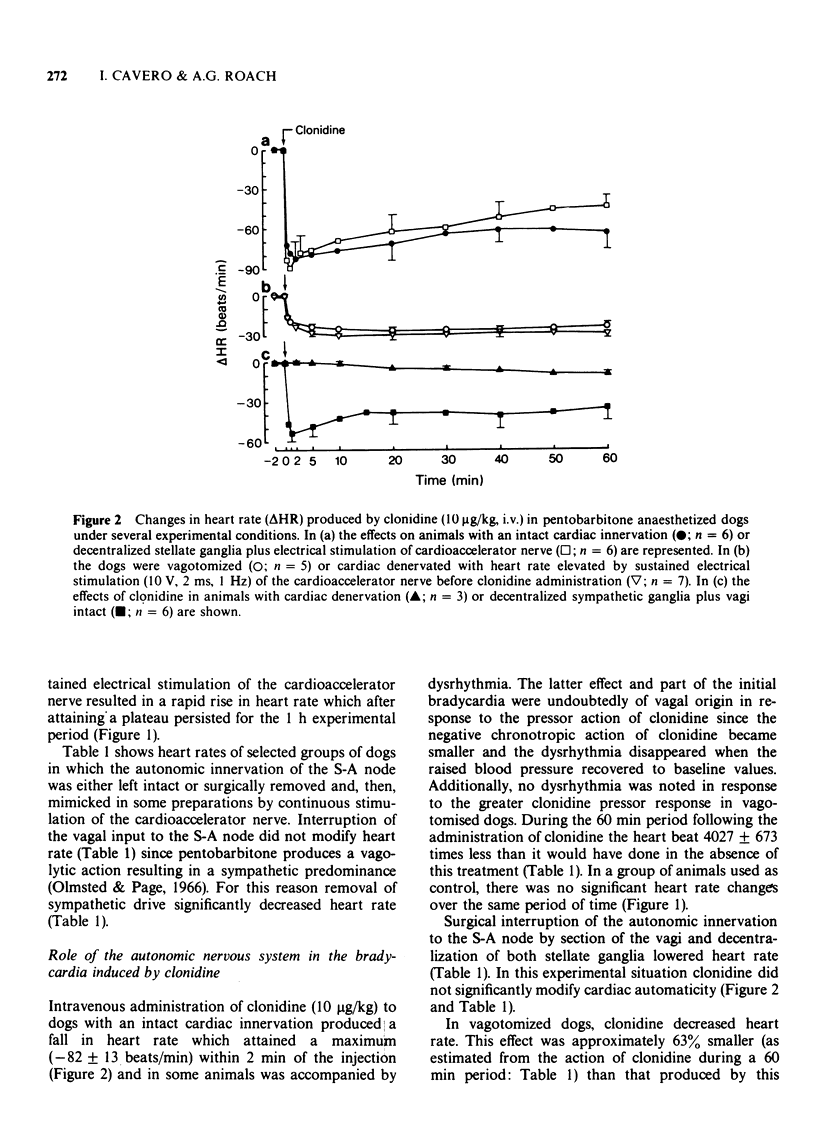
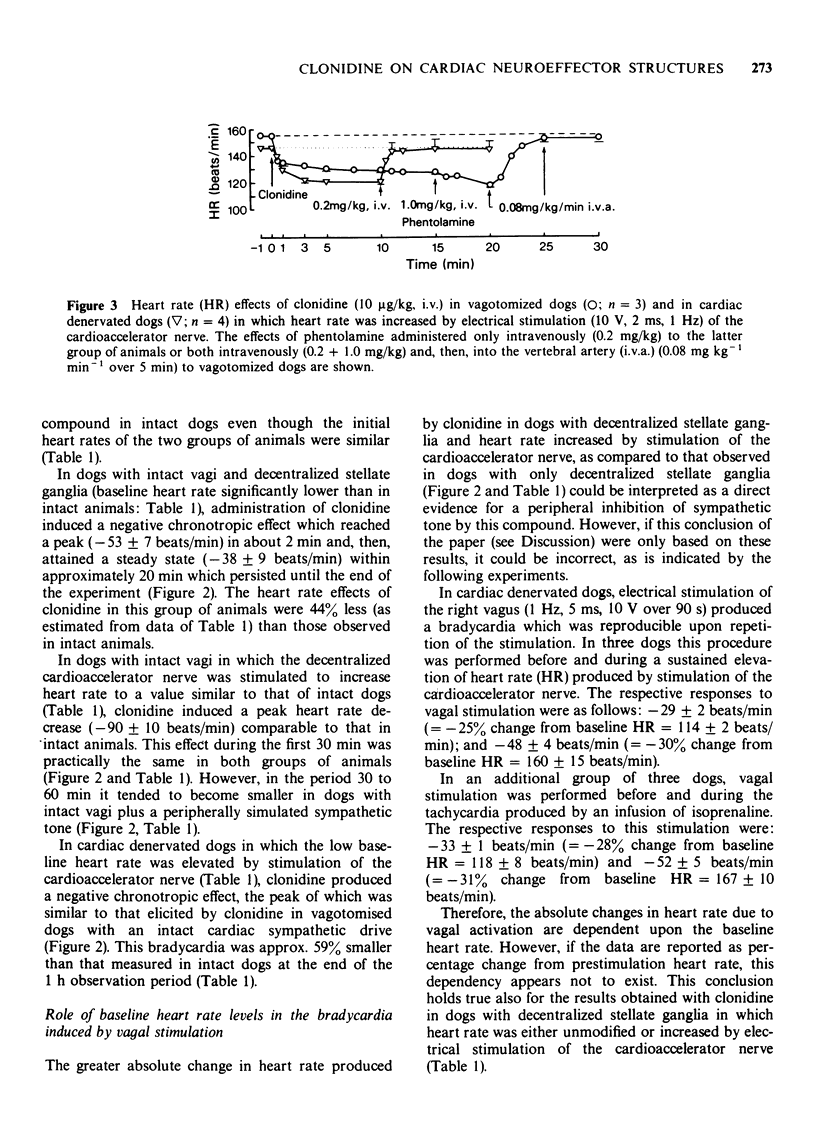
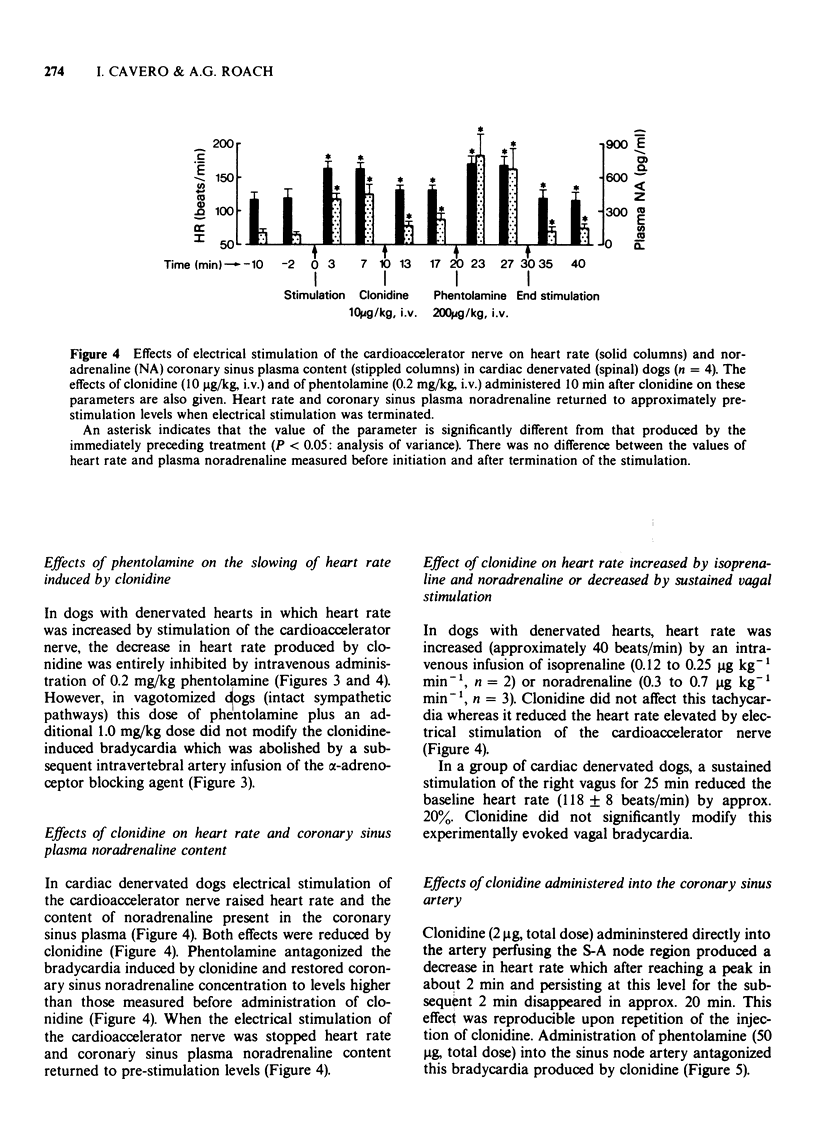
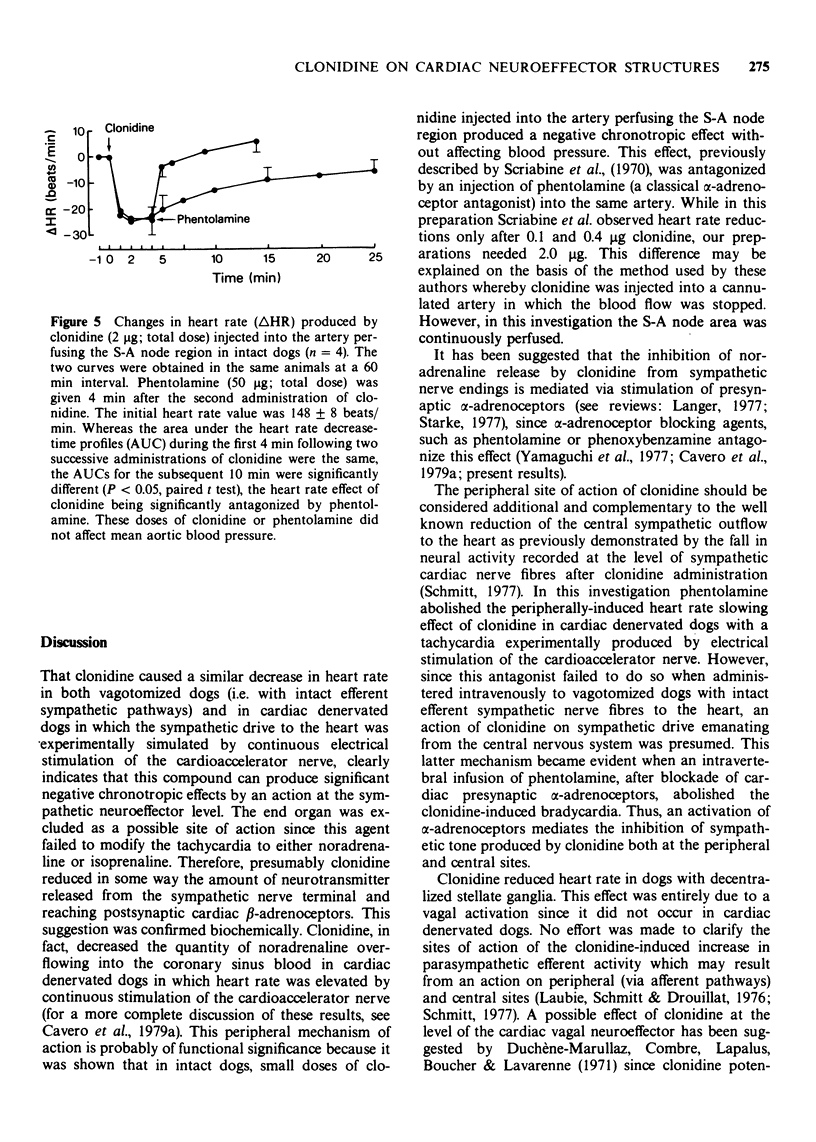
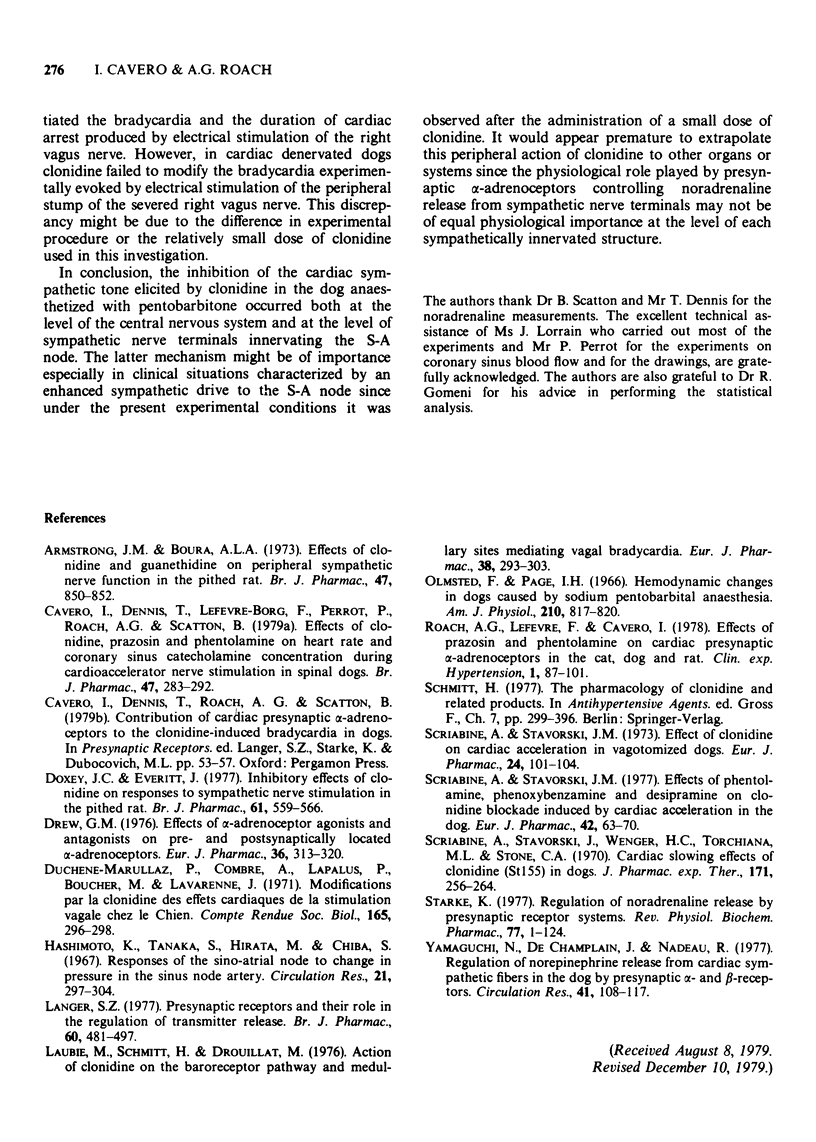
Selected References
These references are in PubMed. This may not be the complete list of references from this article.
- Armstrong J. M., Boura A. L. Effects of clonidine and guanethidine on peripheral sympathetic nerve function in the pithed rat. Br J Pharmacol. 1973 Apr;47(4):850–852. doi: 10.1111/j.1476-5381.1973.tb08214.x. [DOI] [PMC free article] [PubMed] [Google Scholar]
- Cavero I., Dennis T., Lefèvre-Borg F., Perrot P., Roach A. G., Scatton B. Effects of clonidine, prazosin and phentolamine on heart rate and coronary sinus catecholamine concentration during cardioaccelerator nerve stimulation in spinal dogs. Br J Pharmacol. 1979 Oct;67(2):283–292. doi: 10.1111/j.1476-5381.1979.tb08678.x. [DOI] [PMC free article] [PubMed] [Google Scholar]
- Doxey J. C., Everitt J. Inhibitory effects of clonidine on responses to sympathetic nerve stimulation in the pithed rat. Br J Pharmacol. 1977 Dec;61(4):559–566. doi: 10.1111/j.1476-5381.1977.tb07548.x. [DOI] [PMC free article] [PubMed] [Google Scholar]
- Drew G. M. Effects of alpha-adrenoceptor agonists and antagonists on pre- and postsynaptically located alpha-adrenoceptors. Eur J Pharmacol. 1976 Apr;36(2):313–320. doi: 10.1016/0014-2999(76)90084-4. [DOI] [PubMed] [Google Scholar]
- Duchêne-Maruliaz P., Combre A., Lapalus P., Boucher M., Lavarenne J. Modifications par la clonidine des effets cardiaques de la stimulation vagale chez le chien. C R Seances Soc Biol Fil. 1971;165(2):296–298. [PubMed] [Google Scholar]
- Hashimoto K., Tanaka S., Hirata M., Chiba S. Responses of the sino-atrial node to change in pressure in the sinus node artery. Circ Res. 1967 Sep;21(3):297–304. doi: 10.1161/01.res.21.3.297. [DOI] [PubMed] [Google Scholar]
- Langer S. Z. Sixth gaddum memorial lecture, National Institute for Medical Research, Mill Hill, January 1977. Presynaptic receptors and their role in the regulation of transmitter release. Br J Pharmacol. 1977 Aug;60(4):481–497. doi: 10.1111/j.1476-5381.1977.tb07526.x. [DOI] [PMC free article] [PubMed] [Google Scholar]
- Laubie M., Schmitt H., Drouillat M. Action of clonidine on the baroreceptor pathway and medullary sites mediating vagal bradycardia. Eur J Pharmacol. 1976 Aug;38(2):293–303. doi: 10.1016/0014-2999(76)90332-0. [DOI] [PubMed] [Google Scholar]
- Olmsted F., Page I. H. Hemodynamic changes in dogs caused by sodium pentobarbital anesthesia. Am J Physiol. 1966 Apr;210(4):817–820. doi: 10.1152/ajplegacy.1966.210.4.817. [DOI] [PubMed] [Google Scholar]
- Roach A. G., Lefèvre F., Cavero I. Effects of prazosin and phentolamine on cardiac presynaptic alpha-adrenoceptors in the cat, dog and rat. Clin Exp Hypertens. 1978;1(1):87–101. doi: 10.3109/10641967809068597. [DOI] [PubMed] [Google Scholar]
- Scriabine A., Stavorski J. M. Effect of clonidine on cardiac acceleration in vagotomized dogs. Eur J Pharmacol. 1973 Oct;24(1):101–104. doi: 10.1016/0014-2999(73)90119-2. [DOI] [PubMed] [Google Scholar]
- Scriabine A., Stavorski J. M. Effects of phentolamine, phenoxybenzamine and desipramine on clonidine-induced blockade of cardiac acceleration in the dog. Eur J Pharmacol. 1977 Mar 7;42(1):63–69. doi: 10.1016/0014-2999(77)90191-1. [DOI] [PubMed] [Google Scholar]
- Scriabine A., Stavorski J., Wenger H. C., Torchiana M. L., Stone C. A. Cardiac slowing effects of clonidine (ST-155) in dogs. J Pharmacol Exp Ther. 1970 Feb;171(2):256–264. [PubMed] [Google Scholar]
- Starke K. Regulation of noradrenaline release by presynaptic receptor systems. Rev Physiol Biochem Pharmacol. 1977;77:1–124. doi: 10.1007/BFb0050157. [DOI] [PubMed] [Google Scholar]
- Yamaguchi N., de Champlain J., Nadeau R. A. Regulation of norepinephrine release from cardiac sympathetic fibers in the dog by presynaptic alpha- and beta-receptors. Circ Res. 1977 Jul;41(1):108–117. doi: 10.1161/01.res.41.1.108. [DOI] [PubMed] [Google Scholar]


